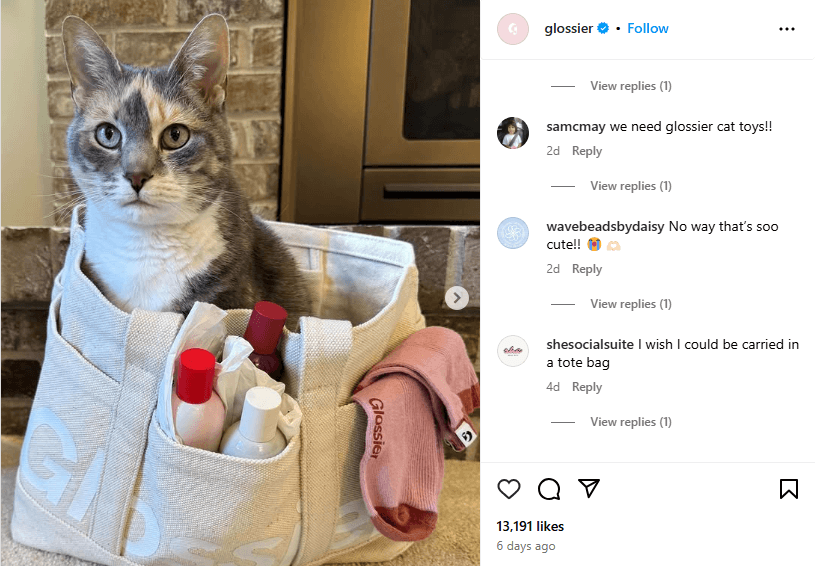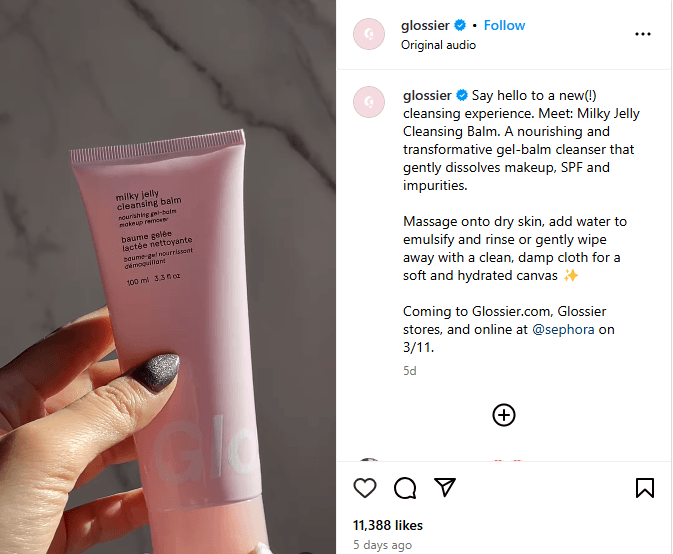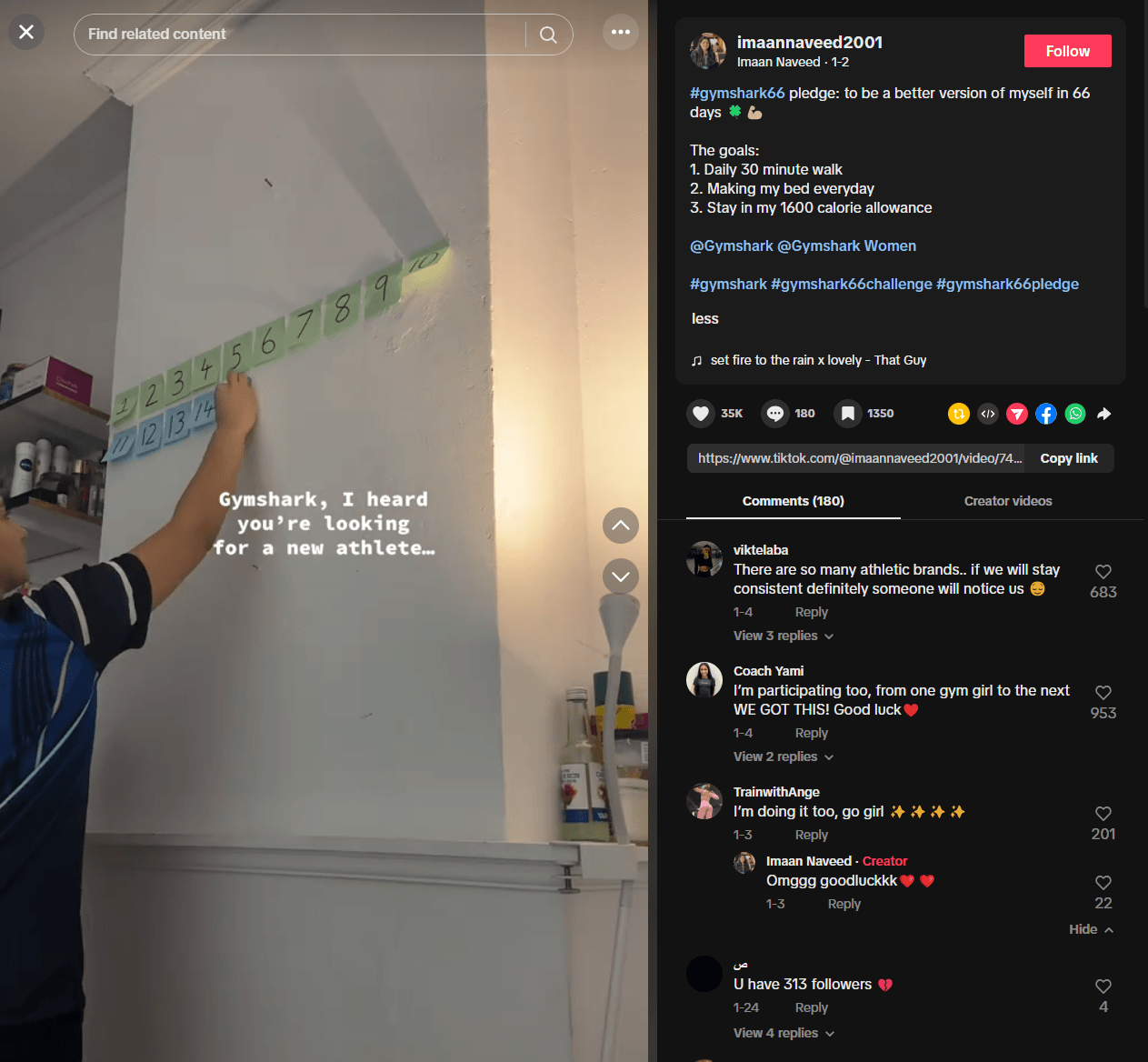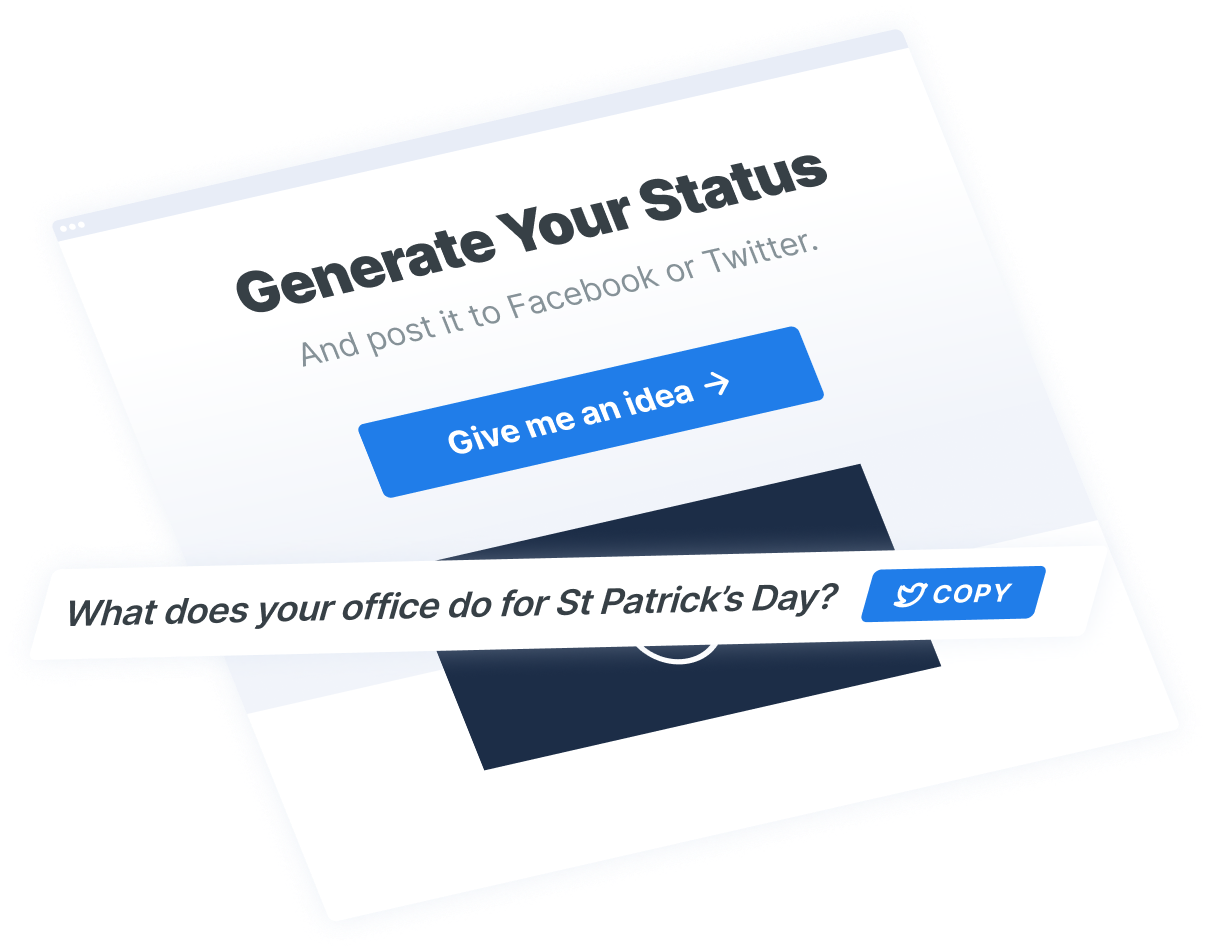- Home
- Blog
- Social Media Micro-Influencers’ Maximum Effect on Your Brand’s ROI
Micro-Influencers’ Maximum Effect on Your Brand’s ROI
-
 Published: Apr 24, 2025
Published: Apr 24, 2025
-
 13 min. read
13 min. read
-
 Catherine Suelo
Catherine Suelo SEO Specialist
SEO Specialist
- Cat is an experienced digital marketer and SEO specialist who likes to hoard words like a dragon guarding its gold. Her Mount Rushmore of writers are Jane Austen, Gabriel Garcia Marquez, Terry Pratchett, and Haruki Murakami. For her, the best things in life are coffee, cats, and conversations until the cows come home.
What is a micro-influencer?
A micro-influencer is someone with a sizable social media following, usually around 1,000 to 100,000. They come across as more relatable to consumers, have a more intimate following, and offer more niche content.
Brands tap micro-influencer marketing campaigns to reach a niche, in-market audience.
Before they came on the scene, brand endorsements were mostly done by mainstream, if not globally recognized, personalities like actors, models, and celebrities. These macro-influencers dominated the advertising industry, commonly seen in traditional media.
But with the rise of social media, average people now have a platform to share their lives, interests, and hobbies.
Out of these people, micro-influencers stood out and have cemented a segment for themselves in the digital marketing industry.
In this article, you will learn more about:
- What is a micro-influencer?
- What is a niche audience?
- Influencer marketing industry statistics
- The benefits of micro-influencer marketing
- How to identify the right micro-influencer for your campaign
- How to partner with micro-influencers
- The best practices for a micro-influencer campaign
- Real-world examples of successful micro-influencer marketing campaigns
- Should you hire a micro-influencer?
What is a micro-influencer?
Micro-influencers are social media personalities who have around 1,000 to 10,000 followers. They share content about a specific topic or lifestyle regularly on their social media platforms. Most do it on their own, usually with no staff support.
Micro-influencers vs. macro-influencers
Micro-influencers can be seen as diamonds in the rough, or niche leaders in a particular community. They mostly produce their own content. They are the stars, directors, and managers of their social media accounts.
You can identify micro-influencers by their social media behavior like:
- Interacting with their followers on a first-name basis
- Answering their followers’ messages personally
- Making every social media content with a stamp of authenticity
Macro-influencers, on the other hand, are typically personalities who need no introduction. Their names easily trigger brand recall, and they have an established personal brand.
Macro-influencers usually:
- Display a carefully crafted persona
- Have their presentation curated to fit the brand messaging
- Hire a staff to support their social media activities
Despite this distinction, micro-influencers have a personal charm that is hard to beat. Their authentic selves are on full display, bringing them closer to their audience. They inspire followers, resulting in high engagement and loyalty. Like any relationship, theirs is built on trust and authenticityy — one follower at a time.
A micro-influencer’s career doesn’t happenovernight. It’s forgedthrough constant trial-and-error of posts and content types, and sometimes just by algorithm luck. The first few micro-influencers didn’t set out to be one, but now they’ve becomea major segment of the marketing industry.
That’s why when brands tap in to micro-influencers, their product promotions usually yield 60% higher engagement rates compared to larger influencers. This benefit is especially true when the brand works with a micro-influencer in the niche they’re trying to break into.
What is a niche audience?
Niche audiences are specialized groups with specific interests or demographics. These more granular groupings are based on lifestyle choices, product choices, brands, hobbies, or interests.
Examples of niche audiences
There are tons of different audiences categorized and segmented in a multitude of ways. Here are some examples:
- Eco-conscious supporters
- Makeup enthusiasts
- Fitness enthusiasts
- Tech geeks
- The gaming community
These people actively seek content on social media platforms that speaks to their lifestyle choices, hobbies, or interests. And that content could be delivered by a micro-influencer in their sphere.
The Power of Niche Audiences
Niche audiences, small they may be in numbers, make up for it in terms of their concentrated drive and passion for their interests. Putting your message in front of this in-market audience gives you these benefits:
- Jumping the funnel: Talking to these niche audiences is like jumping the marketing funnel stages from the awareness stage down to the middle, if not bottom, of the funnel. These people are in-market for the product. This distinction makes it more likely for audience members to buy or convert.
- Targeting fewer competitors: Finding your in-market audience means less competition — not just from other competitors, but also other products. These community members are committed to their lifestyle. This allows for personalized and impactful campaigns that resonate with an engaged audience.
- Growing trust and authenticity: Having a micro-influencer mark your product with their stamp of approval sends a clear brand authority and authenticity signal to their followers.
The influencer marketing industry at a glance
The influencer marketing industry has become an important part of online marketing. Understanding how the industry works can help brands in their search for a micro-influencer partner.
The most important fact to know is that influencer advertising is based on two tenets: personalization and authenticity. Much of the content is delivered through posts and videos. Short-form is more common and preferred than long-form.
Learn more about the influencer marketing industry overall with these statistics:
- The influencer industry is valued at $33 billion in 2025.
- 86% of U.S. brand marketers will be working with micro-influencers in 2025.
- 12% of marketers worldwide will allocate more than 50% of their marketing budgets to influencer marketing.
- 68% of brands use Instagram for influencer marketing, making it a top platform favored by businesses.
- 52% of brands use Facebook for influencer marketing.
- 42% of brands pick TikTok for influencer marketing.
- On average, brands get a $4.21 return on ad spend (ROAS) for every $1 spent on Instagram influencer campaigns.
- TikTok micro-influencers charge around $25-$125 per post.
- Facebook micro-influencers charge around $25-$250 per post.
- Instagram micro-influencers charge around $100-$500 per post.
As Internet users increase, so will marketers’ will to harness the power of influencer marketing. Influencers will continue to be an affordable brand messenger, influencing their followers’ purchase decisions.
The benefits of micro-influencer marketing for niche audiences
When you tap in to micro-influencers for your brand awareness campaign, product promotions, or any other marketing effort, you can expect these benefits:
Increased trust and authenticity
If there’s one thing going for micro-influencers, it’s their almost personal (or even parasocial) relationship with their followers. They’re seen as a credible friend that followers can rely on for real-life advice and perspective. And this perceived credibility is lent to your brand or product when micro-influencers endorse it.
Higher engagement and conversion rates
Promoting a brand or product to a wide audience is one thing — putting it in front of an interested audience is another. Since you’re tapping into a niche community that sees a real need or benefit in what your brand or product offers, there’s much higher engagement with the crowd.
A niche audience that sees your product is not looking for alternatives, researching for comparisons, or requiring a lot of convincing. Compared to those still at the top of your marketing funnel, you won’t need to do much marketing legwork. Willing buyers mean a sale in a shorter timeframe.
Again, this niche audience sees your brand or product not as a want but as a need. With them, a sale is not just a possibility, but a guarantee.
Global reach
The beauty of micro-influencers is that while they advertise to their community, they are also reaching people who are passive consumers of their content — and, by extension, your brand. Through micro-influencers, you can reach anyone from anywhere in the world and have your brand reach a worldwide audience.
Cost-effectiveness
Given their smaller sphere of influence, micro-influencers are more affordable brand promoters. This helps businesses manage their marketing budget and stretch it a little further. This benefit enables a business to hire a couple more micro-influencers and tap in to their actively engaged and loyal followers, thereby achieving a multiplier effect.
Having micro-influencers for your campaigns also makes it easier for you to track the results of those campaigns due to their smaller but still impactful scale.
How to identify the right micro-influencers for your marketing campaigns
Now that you see the value of hiring a micro-influencer, how do you find the right one to partner with? Here are some factors to consider when looking for the right micro-influencer for your brand marketing.
They align with your brand values
Micro-influencers make it easier for you to discover them since they usually post the same themes, just having different topics relevant to their niche. They will have the same general beliefs you have for your brand, whether it’s setting and achieving fitness goals or presenting the best version of themselves every day, the right micro-influencer will be a good role model, if not an ambassador, for your brand.
For example, an eco-friendly brand may tap sustainability influencers who promote sustainable living practices. You can look at their social media metrics, e.g., likes, comments, and shares, to gauge their engagement rate. This gives you an idea of their reach and effectiveness when interacting within the community.
You can also isolate your pool of micro-influencers according to their audience demographics, like their age, location, or interests.
They are discoverable and highly engaged
Influencer marketing platforms like BuzzSumo, Upfluence, and other tools can help you find the right micro-influencer to shortlist for your brand. These platforms keep tabs on the who’s who in the influencer community. They categorize micro-influencers by their niche, their content themes and social media statistics. They can pinpoint the right influencers who are at the top of their game for the current trends you are targeting.
Another way is to search your target social media platforms using your service or product’s most popular hashtags, location tags, or even your brand name. You can judge their discoverability just by using this simple technique.
They have an authentic voice
Once you have a shortlist of micro-influencers you’d like to work with, you can inspect their content and communication style for authenticity. See if their personal voice resonates with your brand style and voice. Another thing to review is if they have a solid, actively engaged set of followers who react, comment, and share whatever they post.
How to partner with micro-influencers
After selecting your micro-influencer, reaching out about a partnership should be planned meticulously. Here are the steps on how to partner with micro-influencers:
1. Craft personalized pitches
Customize your pitch to show how you connect with their brand and audience. Personalize your gift packet, if applicable. This step will help you stand out from other companies in your market.
2. Use their preferred contact
Remember to use their preferred contact method to respect their privacy and show professionalism. This process is the more ethicalway to partner with micro-influencers. Some can course their partnership requests through informal channels, but this is more of a few lucky exceptions than the norm.
3. Let them have creative freedom
Sometimes, micro-influencers know a better way to pitch your brand or product to their followers. Providing pointers but letting them have the creative freedom to craft the content on their own terms will resonate more with their audience.
Best practices for running micro-influencer marketing campaigns
Once you have made initial contact, and they show receptiveness, it’s best to set some ground rules about what you want to achieve.
Set clear marketing objectives and KPIs
Let them know what success looks like for your marketing campaign. Is it the number of products bought, brand mentions, leads generated, or subscriptions? This helps them formulate the right call-to-action (CTA). It also helps them keep track of the right metrics and see how close they are to the campaign goal.
Other examples of key performance indicators (KPIs) are:
- Engagement rate (number of likes, comments, or followers gained)
- Conversion rate (people who bought or subscribed)
- Reach (number of viewers)
Build long-term relationships
Where possible, build a long-term partnership with micro-influencers. This helps your brand maintain its credibility as a trusted brand by the micro-influencer. Long partnerships also signal authority, if not dominance, in the industry.
Track and measure ROI
It can be hard to track if a conversion came from or was influenced by a micro-influencer’s campaign. Using UTM links, promo codes, or affiliate links helps you connect a conversion to a specific micro-influencer.
It’s just equally hard to comb through a flurry of shares, comments, and likes to see a micro-influencer’s effect on your brand. You can use social media analytics to measure engagement and audience sentiment.
Real-world examples of successful micro-influencer marketing campaigns
After all that information, are you still wondering, “Does a micro-influencer marketing campaign work?” How does one use micro-influencers for marketing their brands?
Do these micro-influencers effect lasting change not only in a company’s sales but also in its growth, profitability, and valuation?
Here are some real-world examples of successful micro-influencer marketing campaigns and what they achieved for the brands they worked for.
Glossier: Every woman is an influencer

Pivoting away from magazine models with airbrushed features, Glossier has been successful in turning its loyal users into micro-influencers for the brand. They showed how to use micro-influencers to reach niche audiences. These customers have truly tried and tested the products. They serve as a living testament to the cosmetic’s effectiveness. With every brand post and demo reel, they add credibility and authenticity to the brand name.

Through this micro-influencer marketing campaign, Glossier has gained tons of user-generated content, lending more credibility and authenticity to their customer-led growth as a direct-to-consumer (D2C) beauty brand.
And the results of their micro-influencer marketing campaign are:
- 2.7 million loyal customers and micro-influencers spreading the gospel of Glossier products.
- 70% of their sales and traffic come from peer-to-peer referrals.
- 8% of sales were brought in by Glossier’s Instagram Ambassador program
- Glossier’s company valuation reached $1.8 billion in 2021.
- They have since partnered with Sephora and Nordstrom to reach more consumers.
Gymshark: The success of #Gymshark66

Gymshark collaborated with TikTok micro-influencers to create viral content like fitness challenges, dance routines, and relatable gym moments. On Instagram, they shared workout routines and tips along with body-positive imaging. Tapping into micro-influencers helped Gymshark gain brand awareness, engagement, and reputation among its target audience.
In numbers, Gymshark achieved:
- A 1.8% brand engagement rate on TikTok, which is high for a brand account.
- 7.1 million brand engagements on Instagram, driven by 112 posts over three months.
- 45.5 million TikTok views on the hashtag #Gymshark66.
- A company valuation of $1.3 billion in 2025.
- Better global reach — they ship to 130 countries worldwide.
- Expansion — they will open 3 new stores in Manchester, London, and Amsterdam.
Should you use micro-influencers for marketing?
As a brand trying to break away from the glut of ads, micro-influencers are your newest and best allies. Micro-influencer marketing drives impactful results for your service or product by authentically boosting your brand to their community, who are your in-market audience. Their concentrated advertising efforts can make a huge difference in brand impact, engagement, and sales.
Hire a micro-influencer if you are:
- Launching a brand
- Needing more brand awareness
- Have a limited marketing budget
- Want loyal customers, quick wins, and easy sales
That said, launching an effective social media campaign starts with choosing the right micro-influencers who can bring in the required numbers for it to be a success. Also, setting target KPIs helps them build a better campaign.
Try micro-influencing marketing with a social media agency!
Need help with your social media strategy? How about selecting the right micro-influencer to work with? WebFX social media services and influencer marketing arm are ready to help you come up with the right micro-influencer-led social media campaign today!
-
 Cat is an experienced digital marketer and SEO specialist who likes to hoard words like a dragon guarding its gold. Her Mount Rushmore of writers are Jane Austen, Gabriel Garcia Marquez, Terry Pratchett, and Haruki Murakami. For her, the best things in life are coffee, cats, and conversations until the cows come home.
Cat is an experienced digital marketer and SEO specialist who likes to hoard words like a dragon guarding its gold. Her Mount Rushmore of writers are Jane Austen, Gabriel Garcia Marquez, Terry Pratchett, and Haruki Murakami. For her, the best things in life are coffee, cats, and conversations until the cows come home. -

WebFX is a full-service marketing agency with 1,100+ client reviews and a 4.9-star rating on Clutch! Find out how our expert team and revenue-accelerating tech can drive results for you! Learn more
Twitter and Facebook Status Generator
Finding engaging social media content for your business can be difficult. Use our tool to quickly find ideas and post directly to your page.
Give Me an Idea
Table of Contents
- What is a micro-influencer?
- What is a niche audience?
- Influencer marketing industry statistics
- The benefits of micro-influencer marketing for niche audiences
- How to identify the right micro-influencers for your marketing campaigns
- How to partner with micro-influencers
- Best practices for running micro-influencer marketing campaigns
- Real-world examples of successful micro-influencer marketing campaigns
- Should you use micro-influencers for marketing?
- Try micro-influencing marketing with a social media agency!

Social Media Success Story

Proven Marketing Strategies
Twitter and Facebook Status Generator
Finding engaging social media content for your business can be difficult. Use our tool to quickly find ideas and post directly to your page.
Give Me an Idea





